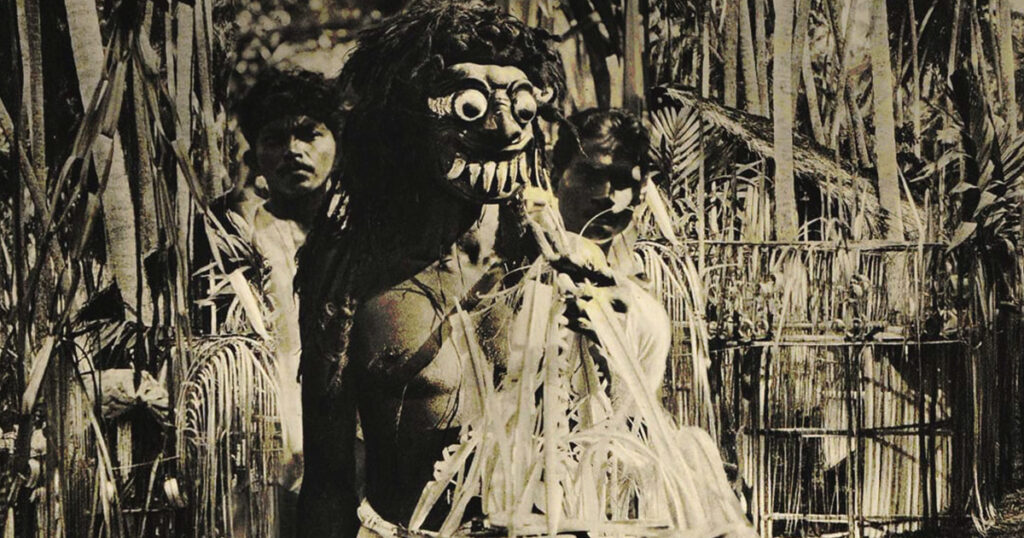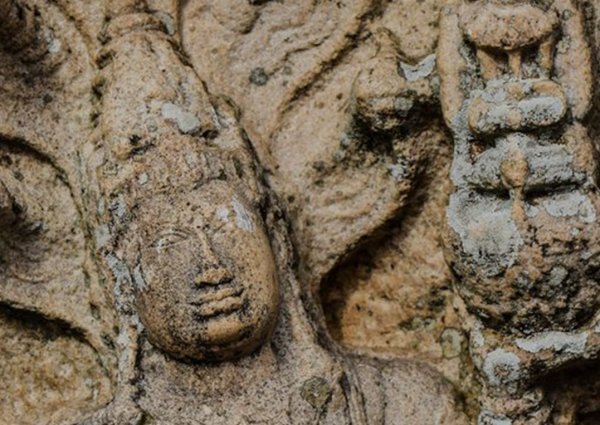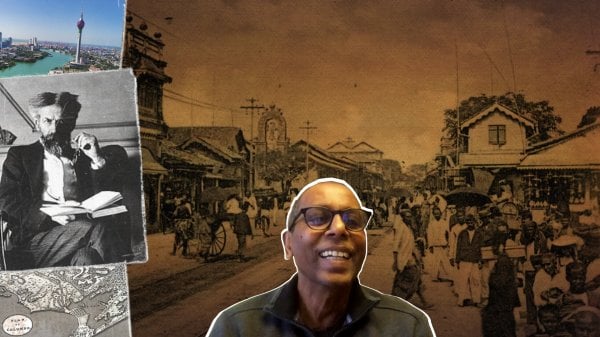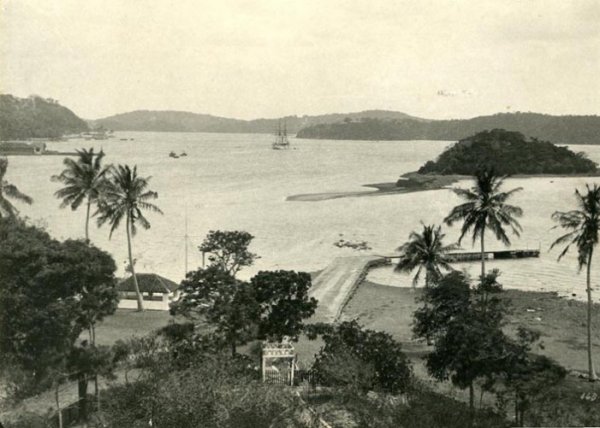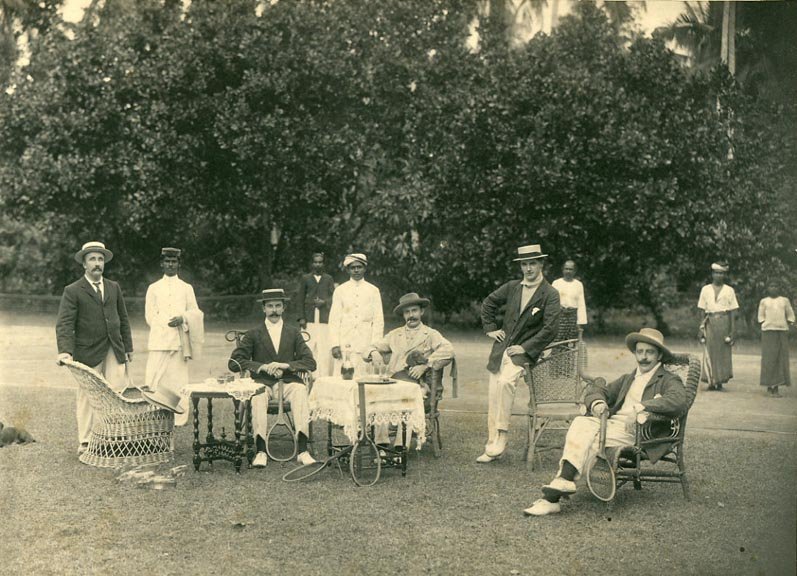
That Western colonialism had a profound influence on our little country there can be no doubt. Tea, the roads and railway system, a vibrant parliamentary system and the use of the English language are part of Sri Lanka’s colonial legacy. However, colonialism also had its ill effects. The suppression of national freedom struggles, often with an iron hand, unfair taxation and social changes that adversely affected the lives of the local peasantry are among the negative aspects of colonialism.
Then there are those things we inherited from the Brits we could have done without, but chose to perpetuate in the belief that they were part of our way of life. Here are three hangovers from the days of the British Raj we could have arguably dispensed with, but chose not to.
The Colour Khaki In Police Uniforms
The khaki colour of our police uniforms is something we take for granted. But does this have to be so? In fact, the vast majority of countries including in our part of the world have never had khaki as part of the uniform of law enforcement officers. The only exceptions are a few countries that came under a long spell of colonial rule, like India and Sri Lanka. In fact, we have got so used to it, that we do not even question as to why our cops still wear such an unsightly colour like khaki.
But there’s a long story behind how khaki came to figure in our police uniforms, and not surprisingly it has its origins in the heyday of colonialism in the country. The word khaki is a Hindustani word meaning ‘dusty’ and originally came into use in British India as the colour of choice for military and law enforcement personnel. But why, it may be asked, did the British prefer such an odd colour as khaki? Well, the answer is for obvious purposes of camouflage.
In the earliest years of British colonialism in India, the preferred military colour was red. As J.W Barber notes in his paper Colour in Early Cloth and Clothing (1999): “Red as a colour for a warrior’s clothing has a strong practicality, of course, because it prevents friend and foe alike from seeing when one is wounded – a realization which could adversely discourage one’s companions and hearten the enemy. This is camouflage of another sort.”
Although red was ideal for close combat as we may infer from Barber’s words, over time, when the enemies of the British acquired firearms that could be shot from a distance, red shirts became an easy target especially for rifles. Khaki was the obvious choice to replace it since it went well in the dusty country of India, not only for purposes of camouflage, but also to hide the dirt that could stick onto uniforms in such an environment. And so the Brits adopted it as the colour of choice for their military uniforms in 1848, only a couple of years after it had been introduced by Sir Larry Lumsden and William Hodson for the Corps of Guides in Punjab.
However, it took time for khaki to catch on here. Ceylon’s Police Force formed in 1832 initially had constables wearing dark blue tunics, trousers and black round cap. It was replaced by khaki only in the early part of the 20th century.
The fact is that today our police uniforms are an anachronism. We are not as dusty as India nor are we in a state of war. Today, even police in largely desert countries like Algeria, Egypt and Jordan have smart blue uniforms, which is certainly a better choice than our drab khaki.

Adversarial Legal System
Law’s delays is one of the biggest problems we face today. As the saying goes ‘Justice delayed is justice denied’. When a court of law delays dispensing justice, it rewards the perpetrators of crimes or injustice and penalizes innocent victims. But does it have to be this way?
The answer is, it doesn’t. Much of law’s delays has to do with the adversarial legal system introduced here by the colonial rulers. This system, which has its roots in Common Law that evolved in England, envisages the judge playing a rather passive role, leaving it to the defense and prosecution represented by lawyers to fight it out before giving judgement. In other words, the judge is more like an impartial referee with lawyers effectively directing the case. This system contributes immensely to protracted legal battles, often to litigants ruin, since what is at play here are lawyers arguing and counter-arguing their case without proper oversight, getting dates at their whim and fancy and delaying court hearings, knowing very well that clients will have to pay them for their appearance, not to mention the submissions before a case is taken up, and constant appeals and counter appeals even after a verdict is given, all of which contribute to the backlog in our courts. To get justice very much depends on a lawyer’s skill and not necessarily the client’s innocence.
That this is solely the result of colonial rule, there can be no doubt. This is borne out by the testimony of Major Thomas Skinner who, in a Memorandum on the Social Condition of the Native Population of Ceylon, submitted before the House of Commons (1849), observed that British rule in the country had resulted in the “encouragement to indulge in the most litigious spirit which ever affected the spirit of a people”. Skinner notes that the “The prevailing system of our little district courts admits of proctors feeding upon their clients for years. I have repeatedly, at uncertain intervals, been summoned to attend a district court as a witness in a case which had been before the court ten or eleven years.”
So there we have it, straight from the lips of an Englishman who believed that his countrymen had imposed a grave injustice on the people of the country. Such a situation could have been avoided if the country followed the inquisitorial system that is usually found in civil law jurisdictions that evolved from Roman Law, in countries like France, Germany, and Russia where the judge plays a more active role, even going to the extent of actively investigating each individual case before delivering judgement. In such a system, the role of lawyers is minimal. It ensures greater judicial oversight and swift delivery of justice with little room to play around with the law.
In fact, before British colonialism made inroads into the country, we had a somewhat similar, albeit more localized system of justice. This came in the form of village councils called Gam Sabha that heard lawsuits and dispensed immediate justice by way of fines or physical punishment, which was arguably a much more just system than today’s law system that penalizes victims or prompt them to take the law into their own hands. Moor villages, too, had their own way of resolving disputes by way of a headman known as madicham, or arbiter, who came as a mediator between the two sides of a conflict and played an active role in the deliberations to ensure justice was swift.
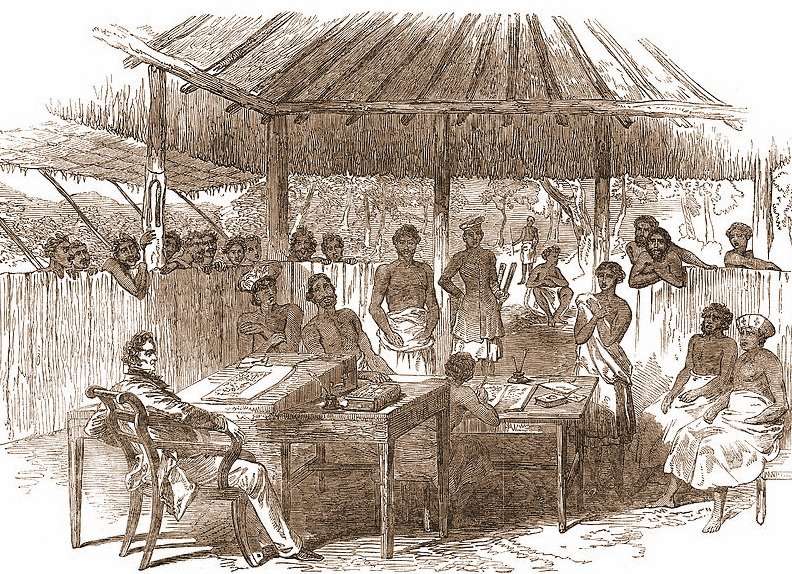
Use Of Sanskrit In Scientific Terminology
It may come here as a surprise, but the use of Sanskrit in coining new words for science also has colonial origins. Local scholars have for long thought it fit to adopt loans from the over 2000-year old, no-longer-spoken Sanskrit language of India to fill perceived shortcomings of the Sinhala language, especially in connection with technical terminology.
One wonders why they could not have resorted to coining existing Sinhala words by joining simpler words to form more complex ones or reviving old Sinhala words that have become obsolete and then combining these to form neologisms like other countries such as Iceland have done.
Well, the answer lies in the colonial education system. Think back to the days when English education held sway here and the local elite were sent overseas for their higher education. An important component of a good British education then was the study of the classical languages of Greek and Latin, and it soon became very obvious to those British educated elites that the English language itself had borrowed extensively from Greek and Latin to form modern scientific terms. A cursory glance of the etymology of English words in any good dictionary will make this pretty obvious.
Although both Latin and Greek are dead languages, having ceased to exist as spoken languages for well over a millennium, they continued to play a very important role in Western scholarship. Latin served as a lingua franca or link language of European scholarship till about the 18th century. The reason was that Europe had a plethora of different languages, and the only way scholars could communicate with one another across borders was to write in Latin, which also happened to be the liturgical language of the Church. Greek, too, was cultivated as a language of Christian scripture and was much studied by men of science, especially since it had a rich literature covering areas as diverse as the arts, philosophy, medicine and science. Thus it is not surprising that these classical languages of Europe should have served as the stock to borrow or coin new words as science evolved.
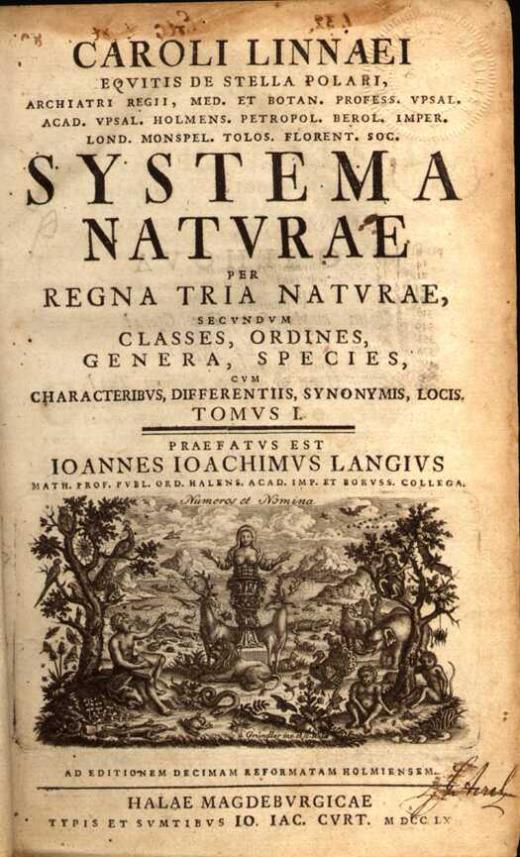
Coming back to Sri Lanka, it’s no surprise that our scholars steeped in the Western tradition looked upon Sanskrit, a dead language like Latin and Greek, to play a role similar to these classical languages and so borrowed extensively from it to coin new words. Of course, they could not resort to the classical languages of Europe, and looked north towards our large neighbour India where the long dead Sanskrit, preserved by the Brahman priesthood and Western orientalists, was being revived for the same purpose.
These academics served in numerous state-appointed glossary committees in the 1950s and 1960s. Among them were men like V. Basnayake, S. R. Kottegoda and T. W. Wikramanayake who made a strong case for adopting Sanskritic terms for scientific terminology, as evident in their paper Sinhalese Technical Terms in Physiology and Biochemistry, published in the University of Ceylon Review of April 1962. They argued that Sinhala “has remained comparatively static in the fields of science and technology”, and pointed out that borrowing from Sanskrit was necessary so that scientific terms could stand for something specific and not be coloured by popular association. They also pointed out that it would not be difficult to learn such terms as they could be built systematically out of roots or words which have a specific meaning, such as jaiva ‘life’ (the equivalent of bio-) and chedaya ‘cutting’ (the equivalent of –tomy).
Thus it is that we come across in modern Sinhala, coined Sanskritic terms that are obviously calques (word to word translations) inspired by European usage, as for instance varṇa-deha ‘chromosome’ (compare English chromosome from Greek chroma ‘colour’ + soma ‘body’) and daama-prati-kriya ‘chain reaction’ (English chain + re + action). This shows how pervasive the influence of the West has been, though we are unlikely to admit it due to its obvious colonial associations.
Today, the influence of Sanskrit on modern Sinhala scientific terminology is so profound that there’s a modern Sinhala dictionary that defines a gene (jaanaya which itself has been formed from Sanskrit) as avenika lakṣana nirṇaya karana ekakaya (lit. the unit that determines innate traits), almost all constituent forms of which have been formed from Sanskrit.
However, there’s no reason why we should stick to these Sanskritic loans. Sinhala does have words that can be combined to express more complex ideas. For instance, we could use aturudaela (‘Internet’) instead of antar-jaalaya; suḷu-divin ‘microbes’ instead of kṣhudra-jivin; savan-nahara ‘auditory nerve’ instead of shravana-snayu; and le-kes-naeli ‘blood capillaries’ instead of rudhira-kesha-nalika. These euphonious terms are certainly easier on the lips than the jaw-breaking Sanskritic forms even our vernacular-educated school children find hard to say.
Colonialism sure has a nasty habit of sticking on!
Cover Image Courtesy: thuppahi.files.wordpress.com
